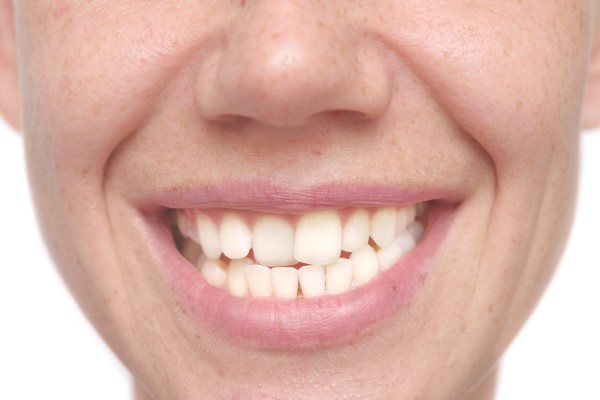Orthodontic Treatment Begins With Determining Teeth Alignment Issue

For both cosmetic and oral health needs, orthodontic treatments are essential. This care is common for teenagers, but younger patients and adults can also benefit from it. For example, many people who seek treatment do so to correct crooked teeth. If you are unhappy with how your teeth look, solutions are available to revive your smile. To get started, the orthodontist will need to understand the type of alignment problem and its severity.
An overview of orthodontic care
Oral health is a vital aspect of a person's well-being. Beyond having healthy, strong teeth and gums, the aesthetics matter. An orthodontist focuses on correcting poorly positioned teeth and jaws. They can also address bite dysfunctions. Many people think of this treatment for adolescents, but children should start seeing an orthodontist as early as age 7.
The type of treatment a person will get depends on their needs and issues. Some conditions may only require a few months of intervention. But, more problematic concerns can take three or more years to address. The orthodontist may use a particular method to correct the smile. Sometimes, a combination of tactics might be most effective.
Alignment issues that an orthodontist can treat
It can be embarrassing if the individual has crooked teeth, gaps in the mouth, or misaligned jaws. Fixing crooked teeth is perhaps the most frequent problem that orthodontic treatment can correct. But patients can get help for underbites, crossbites, and overbites too. Treatment can also repair open bites, crowded teeth, and oddly shaped teeth.
The orthodontic treatment process
Patients considering or recommended for orthodontic treatment will undergo a preliminary orthodontic consultation, discuss their treatment options with the orthodontist to establish a treatment plan, and then begin treatment on the second visit. The length of treatment varies by individual case but can take, on average, one to three years for braces and 12 to 18 months with clear aligners. Some patients will require more or less treatment time, depending on the severity of their teeth or jaw misalignment.
The consultation
A child's parent might be the first to realize there is a need for orthodontic intervention. However, the patient's dentist usually will refer the person to an orthodontist for help correcting the smile. When the patient and orthodontist meet, the orthodontist will examine the patient. Then, the orthodontist will diagnose the misalignment and discuss treatment options.
The treatment plan
Once the orthodontist identifies the misalignment issues and their severity, a treatment plan will be next. First, the orthodontist will make impressions of the mouth. From here, the orthodontic plan will include the type of method and the length of the treatment necessary to repair the problem. The orthodontist will discuss this with the patient and begin the therapy.
Braces or aligners
In most cases, the orthodontist recommends two orthodontic treatment options: braces or clear aligners. Both have benefits and drawbacks. Braces contain metal, so they stand out in the mouth and can be uncomfortable. However, braces are effective at treating even the most complex misalignments.
Aligners are made of plastic and fit over the teeth like a mouthguard. The aligners are virtually invisible and removable. As a result, the treatment time is typically shorter. Remember that aligners are not the right choice for more serious alignment problems.
Most patients need to come in every four to eight weeks for {{DOCTOR}} to check up on their progress. These visits may include adjustments to the braces. These appointments typically take 20 to 40 minutes. In addition, patients will need to wear a retainer, fixed or removable, after completing treatment to prevent their teeth from shifting back to their original placement. We will create the custom retainers on the patient's second to the last visit.
When is the best time for orthodontic treatment?
Patients of any age can benefit from teeth straightening. However, it is ideal for placing braces on patients between the ages of 10 and 14. The head and mouth are still growing during this time, and teeth are still developing and are thus more conducive to straightening. Still, it is never too late for orthodontic treatment.
Though it may be tempting to try DIY home teeth straightening methods, nothing can replace a qualified dentist's expertise. After completing their undergraduate degree, they must undergo four years of dental school and complete a residency. Trying to straighten one's teeth at home can put excess strain on the tooth roots and ligaments, which can even kill a tooth.
Let an orthodontist evaluate your bite today
You can do something about crooked teeth and bite abnormalities. With the right orthodontic approach, a new smile is not far away. Book a consultation appointment with our orthodontist today, and you can decide which treatment makes the most sense.
Request an appointment here: https://www.brooklyn-orthodontist.com or call Brooklyn Heights Orthodontics: Susan Liebman, DMD at (718) 416-6368 for an appointment in our Brooklyn office.
Check out what others are saying about our dental services on Yelp: Orthodontic in Brooklyn, NY.
Recent Posts
Orthodontics can fix almost all teeth alignment issues. Poorly aligned teeth can ruin the way that your smile looks, and they can also leave you more vulnerable to a variety of oral issues, like tooth decay and gum disease, because it is harder to remove plaque from teeth surfaces. Improperly aligned teeth can also make…
Orthodontics help straighten improperly aligned teeth. Teeth alignment problems can ruin the appearance of your smile and leave your teeth more vulnerable to issues like tooth decay and gum disease.Orthodontics uses devices like braces and clear aligners to improve the alignment of teeth by gradually pushing them to better positions over time. Common teeth alignment…
Oral hygiene is vital when you are straightening your teeth with orthodontics. Oral appliances used to straighten teeth like braces and clear aligners can get in the way of oral hygiene. These appliances, braces in particular, can also increase your risk of oral issues like tooth decay.The oral appliances used to straighten teeth can increase…
Orthodontics correct dental and oral health issues in children and adults alike. Dentists agree that it is never too late to correct a bad bite. That said, they encourage orthodontic treatment at an earlier age. So, what is this ideal age for orthodontics? Is it a number or an age range?The skeletal structure is never…


